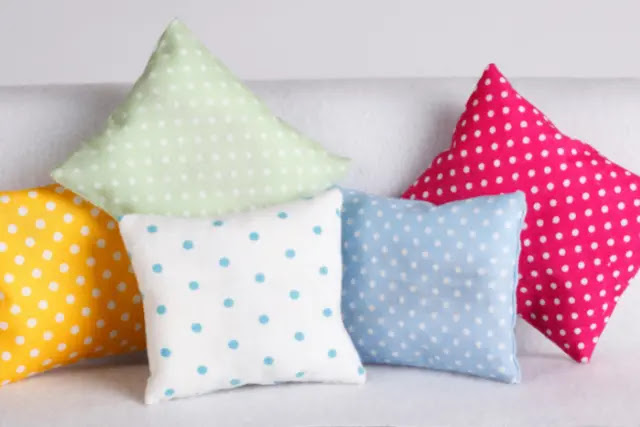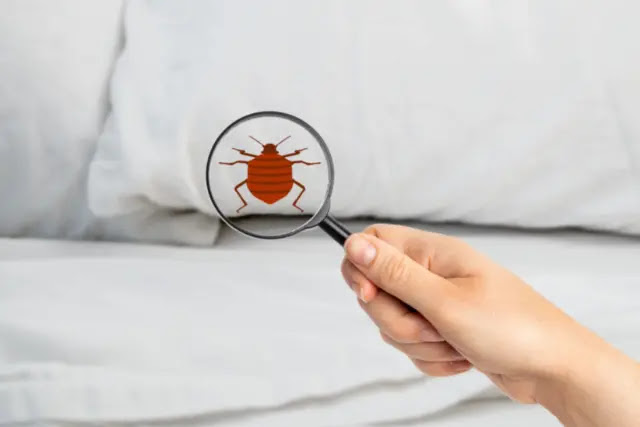Bed bugs are a relentless pest! Meaning that once they infest your bedroom, they can seek harbor almost anywhere. They will hide in box springs, baseboards, wallpaper, cracks in the bed frame, and even behind your favorite wall decor hanging right above your bed.
Bed bugs prefer hiding in places closer to where you sleep at night as it is more convenient for their nightly pursuits: crawling out of hiding to steal blood from you. The sight of these creepy pests on your mattress is terrifying enough, but the thought of them crawling out of your pillow onto your face or ears can be devastating!
There are many types of pillows on the market today, like throw pillows and down pillows. But feather pillows are the most commonly used type of pillows. Hence, 'do bed bugs live in feather pillows?' is a commonly asked question. Here we'll answer this question and teach you how to prevent and kill bed bugs in pillows.
{tocify} $title={Table of Contents}
So, Do Bed Bugs Live In Feather Pillows?
Bed bugs do not necessarily LIVE in pillows; they HIDE underneath pillows unless the infestation is full-blown.
Feather pillows are particularly light and ultra-comfortable. Most people look forward to a restful night of laying down on these luxurious pieces. But as much as you love your luxurious pillows, so do bed bugs.
Depending on the level of the infestation, bed bugs can move from the mattress and invade your feather pillows. These intelligent pests are so skilled at hiding, and you might never pinpoint them living in/under your pillow. But if you wake with a red itchy and irritating bump on your face, neck, and shoulders, the chances are that you're sharing the pillow with bed bugs.
The trouble is, you can't see these unpleasant critters in feather pillows. The feathers in the pillow are so well packed and intertwined that bed bugs could be hiding in there without you even noticing them. Feather pillows do not have anything, in particular, that attracts bed bugs, but unfortunately, they will attack them if the infestation is too widespread.
While some homeowners will be hasty to throw their infested pillows away, that won't solve the bed bug problem. In fact, discarding the pillow is pricey and may make the situation worse. Read on to find out how to prevent and get rid of bed bugs from feather pillows.
Do Bed Bugs Live In Other Pillows?
Bed bugs can also hide underneath or live in many other types of pillows, including:
- Bed bugs in regular pillows- bed bugs can also live in regular pillows. Though they may not get into the pillow stuffing, you may notice them on the edges and mostly in the pillowcases.
- Bed bugs in memory foam pillows- memory foam pillows are soft, but they are constructed with denser stuffings that are well distributed. Therefore, the chances of bed bugs getting inside are slim to none. However, if you're using a pillowcase, the unpleasant pests can get inside and be in direct contact with the pillow. It's unlikely that your head will crush the bed bugs while you turn in your sleep. Therefore, unless you keenly inspect the pillowcase, it'll be hard to suspect or spot bed bug shells/blood stains on the pillow.
- Bed bugs in down pillows- down pillows are by far the most recommended long-lasting pillows for great comfort. They are made to adjust and suit your sleeping style and body type. Bed bugs also love the comfort that comes with these pieces. But since they can't possibly burrow into the pillow, they will happily hide underneath it. Note that they can also get inside a pillowcase and be in direct contact with your luxurious down pillow.
- Bed bugs in throw pillows- throw pillows are common in nearly every home. While they are mainly kept in the living rooms, it's not uncommon to find these decorative pieces in the bedroom. Can bed bugs live in throw pillows? It's unlikely. Because you rarely sleep on throw pillows, bed bugs will have no interest in them. But they can hide under throw pillows.
The bottom line is that if the infestation is still small, bed bugs will mostly hide under pillows or walk across them, but if the infestation is severe, the pests will find their way into the pillow. So, perhaps you're wondering, why do bed bugs infest pillows in the first place?
Why Do Bed Bugs Infest Pillows?
It's possible for bed bugs to live inside your pillow, although less rarely than they live in mattresses. These annoying pests can infest and live in your pillow because it provides most factors that bed bugs need to thrive:
- Easy access to food ( your blood)
- They are literary attracted to the warmth and carbon dioxide you release while asleep.
- They prefer hiding in dark places like the area underneath your pillow
- Bed bugs like to hide in seams and hems that may be available in your pillowcase.
- They can find a way to get deep inside your pillow in search of safety.
Do Bed Bugs Lay Eggs In Pillows?
Yes. A female bed bug will lay her eggs in your pillow if she deems it suitable and safe.
Often, bed bugs will lay their eggs in pillows if there's an existing infestation in your home/bedroom. Here's why: once a female bed bug is mated and pregnant, she can lay between 1-5 eggs each day for the next 6-8 weeks.
After she's pregnant, the female bed bug develops a need to protect herself from further mating sessions to protect her eggs. That's because if she remains in the same spot where she mated, the males will repeatedly try to mate her. This would damage her shell and ability to lay eggs.
Therefore, she'll travel from the harborage in search of a safer and secluded place to lay her eggs. Bed bugs do not travel very far. Additionally, your pillow is the closest and safest place she can reach from under your mattress. So shell gets inside and establishes a new harborage as she lays 1/2/3 or more eggs daily.
Note that female bed bugs will not lay eggs in your pillow if it doesn't provide her the safety she needs. For instance, if it's already infested. So she'll look for somewhere else, like the cracks and crevices in the wall or the gaps between the carpet.
The Signs Of Bed Bugs In Pillows
There are many signs that you can look for to identify a bed bug infestation in your pillow:
- Bed bugs- you can spot the little critters themselves in/on your pillow. Bed bugs are pretty small with the shape of an apple seed and are brown in color.
- Bed bug shells- bed bugs grow older and bigger by shedding off their dry and tough shells to accommodate more size.
- Fecal droppings- because they feed on your blood, bed bug fecal droppings appear like a tiny black ink stain that soaks into your pillow.
- Bloodstains- when bed bugs bite your neck or face, they may leave some blood oozing. You'll find that stain on your pillow. Additionally, you can squash a bed bug as you turn in your sleep, and they'll leave a bloodstain.
- Musty odor- bed bug smell can be sweet and musty, often likened to that released by berries.
How To Prevent And Kill Bed Bugs In Pillows
You can get rid of bed bugs in one simple way- trap them and limit their ability to spread to other house areas. Then clean your pillow with heat, water, and a regular detergent as follows:
- Carefully inspect if bed bugs are underneath the pillow and seal both the pillow and infested bedding in an airtight bag. This prevents them from getting out and spreading to other areas of your house.
- Empty the pillow directly into a washing machine and wash it on maximum heat for at least an hour.
- After a thoroughly clean, dry the pillow in a dry set at high heat to kill any remaining bed bugs. High temperatures above 122° will kill bed bugs and bed bug eggs effectively.
- Note that drying your pillow using a dryer is meant to kill any bed bug that may have survived laundering. But if you laundered the pillow long enough, the bed bugs should be dead, and using a dryer isn't entirely necessary.
- Store your pillows in a sealable bag, away from the bedroom, to prevent re-infestations.
- Treat your bed using the best bed bug pesticide spray that will kill the pest upon contact and provide long-term residual protection.
- Alternatively, you can seek help from a pest control expert to inspect your home and treat all infested areas while preventing chances of re-infestations. Once your home and bed a rendered pest-free, you can now return your pillows.
Similar posts:




